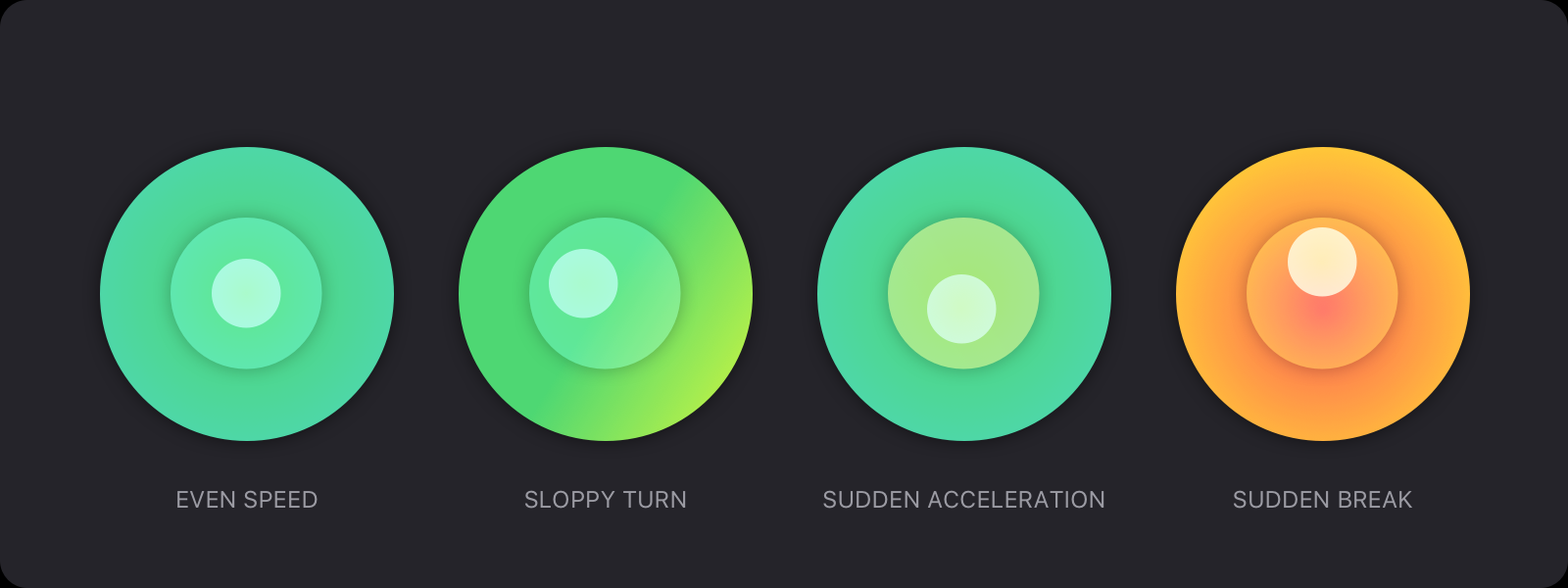I don’t drive. I can, I just don’t, and when I was learning, there was a manual shift and no AC in the car, let alone a screen. I never really grew fond of it, and I’m afraid to drive in a city (I’m afraid of generally anything at a high speed).
Yet, here I was, trying to improve the driving experience through Apple Carplay. It is available in numerous cars, but it’s rarely used. Why? What would make drivers adapt it in a decade?
So I needed to ask some basic questions to explore needs, motivations and pain points and signals for future trends before I could narrow down the space to ideate in.
These first interviews gave me some exciting insights and directions. I covered not just the basic habits around driving (when, where, who owns the car, what kind), but the emotions and needs surrounding it. What do you keep in the car? What do you listen to? How do you navigate? Who do you take with you?
Based on what I found, I didn’t pursue the concept of self-driving at all: everyone more or less enjoyed the activity of driving, it was a big part of the conversation and I didn’t want to take it away for now. Also the self-driving computing equals to 50-100 laptops running at the same time–and energy consumption and eco-consciousness was also a recurring theme in the answers. Our brains can drive on much less.

Clustering all the findings into a large affiinity diagram, I found three main questions to focus on.

Do you pick a car for your next trip?
1. Moral dilemma because of the VW-scandal and generally the climate impact reduces the willingness to pick cars when other options are possible.
2. Car is considered a service, not as an object to own.
Do you connect your phone to the car?
1. It’s a hassle: the phone falls down, Bluetooth takes minutes to connect, which is a problem with a rental where you pay by the minute.
2. Misunderstood mental model: since the car also has a built-in computer, the Apple Carplay is not regarded as a secondary screen, and people are worried about sharing data with the car.
3. Voice interfaces are not trusted for navigation, drivers prefer glancing at a map or just memorising the route.
Do you feel at home in this car?
1. People are not ‘productive’ in the car: maybe they make work calls, but it’s not a place to work and have no desire to change that.
2. Music. For everyone. All the time.
3. Love of driving: the engineering, but especially the driving. It’s a game for adults. However, shared electric cars are not the same: as a driver, you’re less connected to the mechanics of the car. The emotional connection is not there.
This line of questions guided me in creating two behavioral archetypes.

1. The car-loving eco-conscious driver
They love cars, used to own one and drove it daily. However, in Berlin they choose to bike every day for its climate impact, and only drive when that’s not possible and there’s no public transportation available.
2. The vacation driver
They drive only when they travel, or in the city when they need to transport something heavy. They probably won’t own a car in the near future. Otherwise they bike or take public transport.
As I’ve had more information on the first archetype, I chose to continue with them when creating the problem statements and the How Might We-questions.


1. How might we make the driving experience more enjoyable and immersive with driving data?
2. How might we make driving more energy-efficient with driving data?
There was also a user quote that stood out: “try to find out things about you based on how you drive”. Driving reveals a lot about our personality, how could we leverage that as well?
So I started ideating! After a few rough sketches, I made a lo-fi prototype to test. The tests did were not convincing on the usability of this version, so I went back to the drawing board. Instead of built-in cameras, I aimed to condense all the data collected into a simple but informative data visualization that can be glanced at while driving.
The quantitative data could come from the car itself, as well as Apple Watch could measure biometric values to make the model even more precise.


